If you are a Home Assistant user, Matter is irrelevant to you. There, I said it.
Ever since Matter came out in October of 2022, this thought has been brewing in the back of my mind ever since. I thought about this hot take long and hard, and I just cannot justify going all in on Matter if you are a Home Assistant user, for one reason or another.
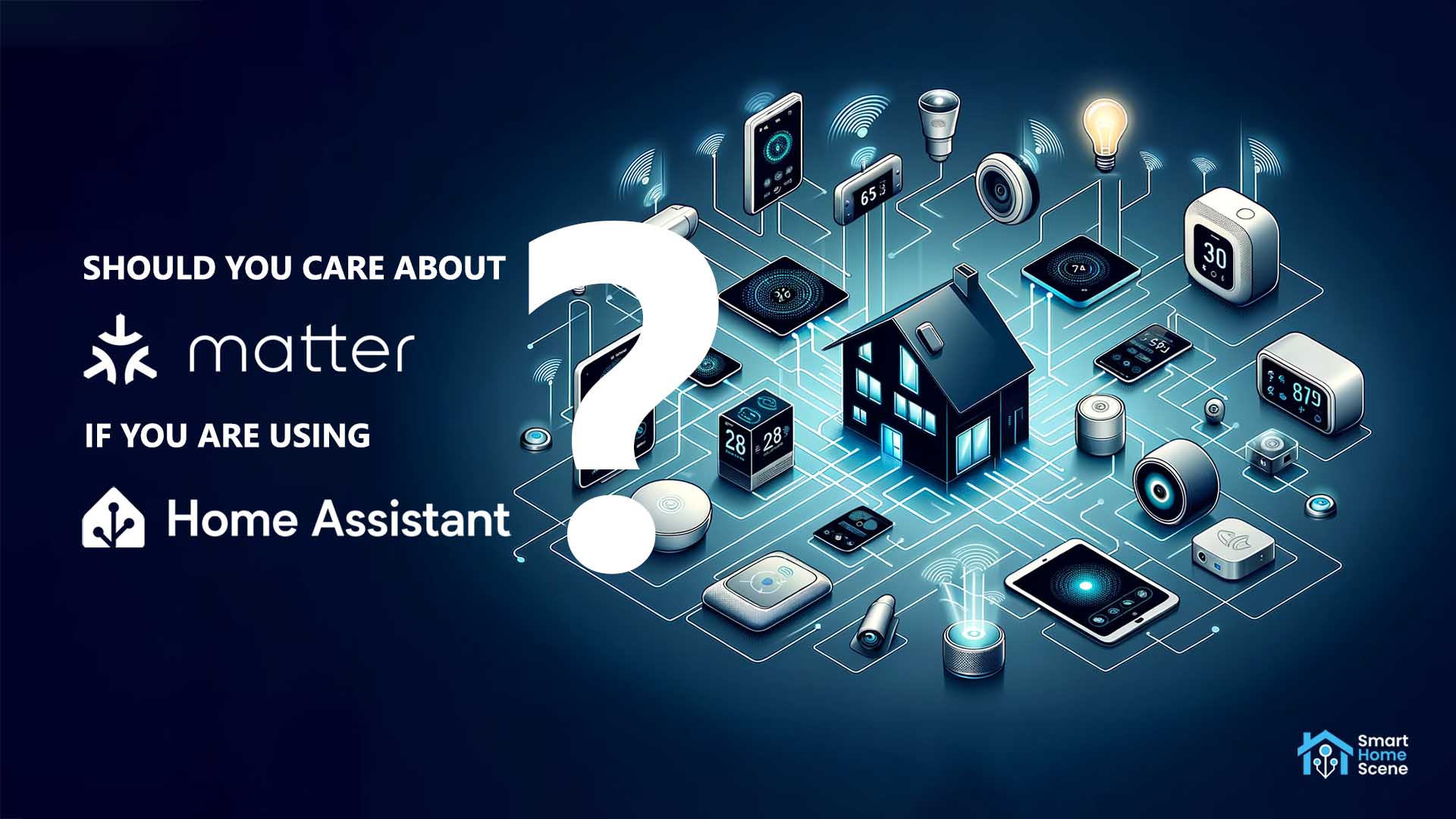
In this article, I am sharing my point of view regarding Matter and Home Assistant, why you shouldn’t care about it and hopefully clear out some things regarding the latest communication protocol.
Please remember, this is solely my own, personal opinion and should be treated as such. Always do you own research, make your own assessments and derive your own conclusions.
What’s Matter trying to solve?
The Matter communication protocol aims to create a universal standard for improved interoperability and easier integration among diverse smart home devices and systems. Matter uses a combination of communication protocols, primarily relying on Wi-Fi and Thread for device connectivity and interaction, while Bluetooth is used for onboarding Matter devices.
Wi-Fi is used for higher bandwidth devices and broader range, while Thread, a low-power mesh networking protocol, is utilized for smaller, battery-operated devices to ensure efficient, reliable, and secure communication.
This is great, until it isn’t. Manufacturers have been known to not follow the Matter specification as is, and instead form their own policies and strategies. Check out this article by Jennifer Pattison Tuohy at The Verge, explaining the interoperability of Thread border routers from different brands.
So, if you are a Home Assistant user, here are my top reasons why you absolutely should not care about Matter at this point and just keep doing what you are doing with Home Assistant.
1. Extensive Protocol Compatibility
Home Assistant’s strength lies in its proxied support for numerous wireless communication protocols like Zigbee, Z-Wave, Bluetooth, Wi-Fi, RF, LoRa and now Thread (Matter). This extensive compatibility has already provided Home Assistant users with a diverse and flexible smart home setup, somewhat overshadowing the need for a new standard like Matter.
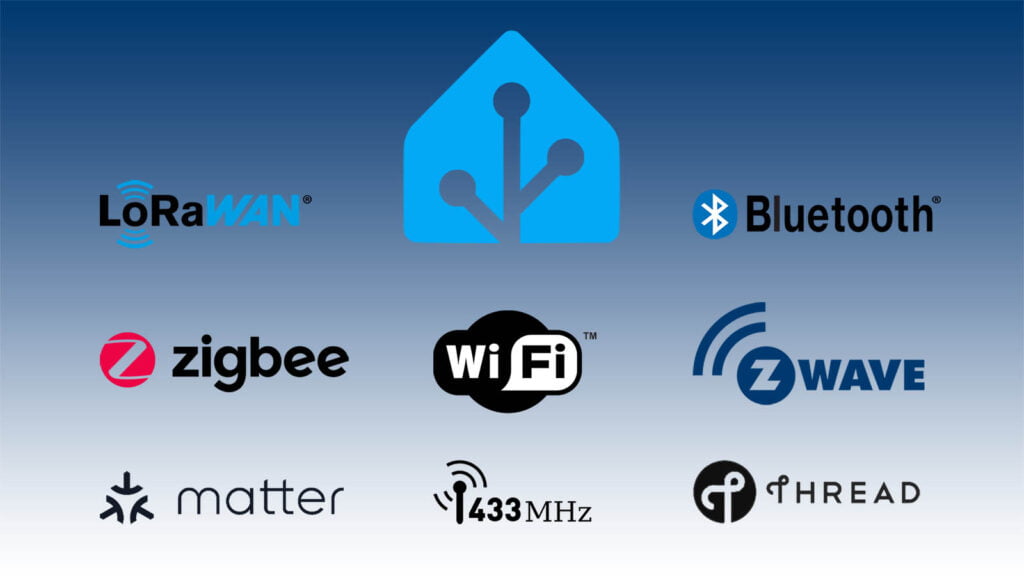
Sure, protocols like Zigbee or Z-Wave require additional hardware known as network coordinators, to orchestrate the mesh you are forming with these communication protocols. But unlike Thread border routers sold by brands like Google or Apple (e.g. Nest Hub, Homepod Mini etc.), these are dirt cheap, usually open-source and available in various connection methods. Relevant: Best Zigbee Coordinators for Home Assistant
Since Matter is in it’s infancy and still in Beta, Matter-over-Thread devices are scarce and almost non-existent. Matter-over-Wi-fi devices are becoming more available instead, which, in my opinion, cause more problems than they solve. Because what’s Matter under the hood? Wi-fi.
Eventually, you are going to be facing the same problems you were trying to avoid in the first place. Connectivity drops, instability, lag and delays. You are going to have to invest in expensive network equipment to somewhat remedy these traditional Wi-Fi issues that come from overpopulating a home network with IoT devices.
Until Thread takes hold and becomes the go to communication protocol for low bandwidth devices, there is no need to look at anything else other than Zigbee or Z-Wave. Both of these protocols are fully developed and mature enough to work with little to no issues with Home Assistant. Side note, you can create your own Thread Border Router by flashing a Sonoff ZBDongle-E with MultiPAN Firmware.
2. Extensive Device Compatibility
I’ve been testing and reviewing smart home hardware for years now and I can comfortably tell you there is no such thing as does not work with Home Assistant. There is only the question of how far are you willing to go to make it work with Home Assistant. A few examples for illustration:
- You need a multi-phase energy meter to measure your whole home energy consumption? Sure, go for the Zigbee PC321-Z-TY or flash the Emporia Vue with ESPHome.
- You need a cheap and capable presence sensor for mass-deployment? Go with the Zigbee Sonoff SNZB-06P or get the fully open-source Apollo MSR-1. You can even build your own 24GHz presence sensor.
- You want to measure the temperature of all your individual rooms? Check out this list for the Best Zigbee Temperature and Humidity Sensors with Display or get a cheap Xiaomi LYWSD03MMC and convert it to Zigbee
- Create your own double-probe temperature sensor with an ESP32 board and some Dallas sensors
- Create your own Zigbee pressure sensor by modifying a contact sensor
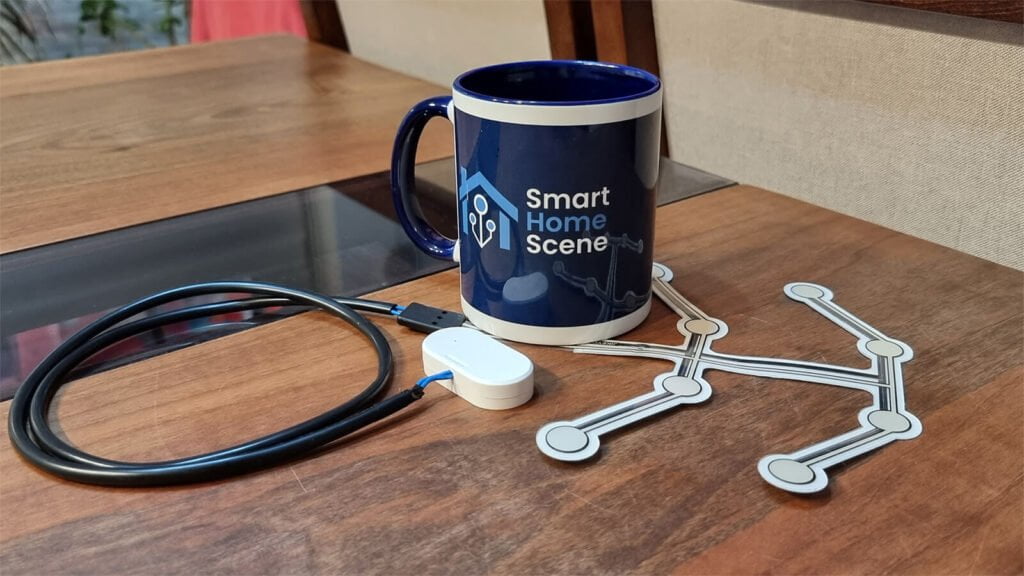
The possibilities are endless and only limited by your imagination and willingness to devote your time. You might think, “I don’t have time to do all this, I will just buy the latest and greatest Matter device”. At the moment, there is no such thing, and quite possibly, there never will be.
You know why? Because of the manufacturers response to Matter. With exceptions, most are releasing very few devices with native Matter-over-Wi-fi or Matter-over-Thread support, but instead, are bridging the gap to Matter by updating their hubs. In my opinion, it will take years before we see stable, usable and wide variety of Thread devices to phase out Zigbee, so don’t waste your time waiting for something that far in the future.
3. Community-Driven Development
Inline with the previous bullet point, the Home Assistant Community continuously works on developing new integrations and improving existing ones. Even when a device is not natively supported, the community’s ingenuity often leads to workarounds or custom integrations. Matter’s objective to simplify device integration is less impactful in a community adept at overcoming integration challenges through collective effort and shared knowledge.
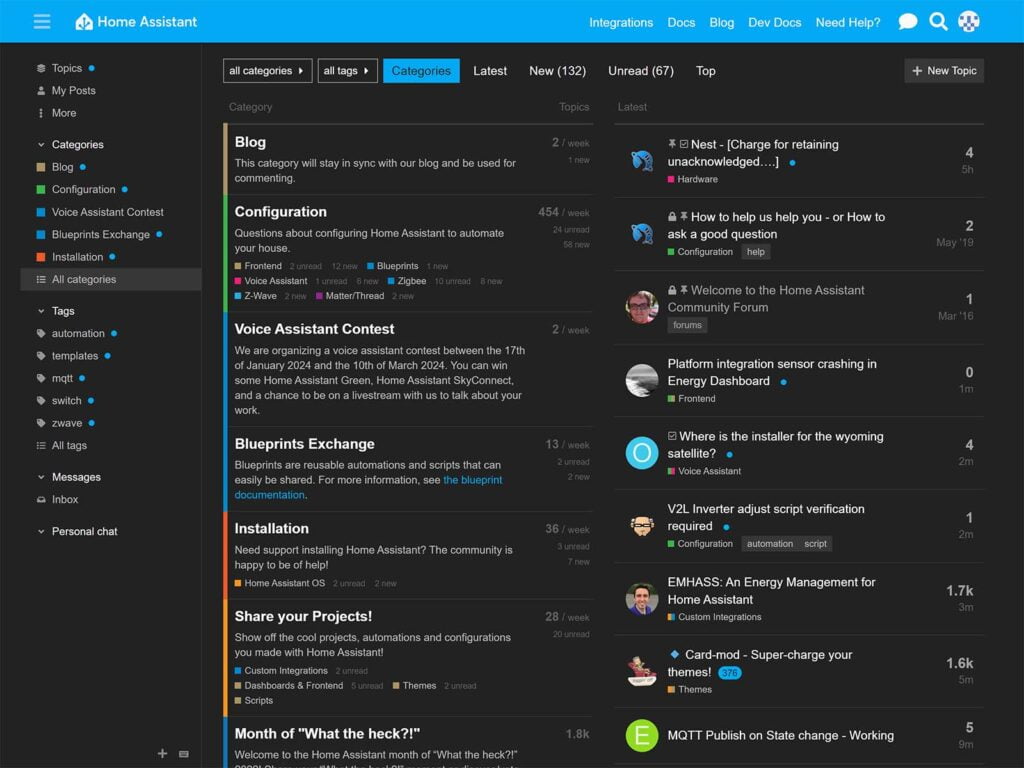
Further, HACS, or the Home Assistant Community Store, is an add-on for Home Assistant which serves as a marketplace for users to discover, install, and manage community-developed integrations and plugins not included in the official Home Assistant repository. HACS greatly enhances the functionality and customization possibility of Home Assistant by offering a wide range of additional components, integrations and dashboard elements like cards or themes.
This level of customization and control is non-existed with Matter devices, with users being heavily reliant device manufacturers or Matter controller ecosystems (Google Home, Apple HomeKit etc.) for adding features and attributes. A recent example which comes to mind is the power-on-behavior and switch mode setting missing from the Sonoff MINIR4M.
4. Local Control and Privacy
A core philosophy of Home Assistant is to keep data local and prioritize user privacy. This is entrenched in any and every aspect of creating and controlling a smart home with Home Assistant, from communication protocols to custom integrations.
Now, while Matter is designed to enable devices to work across various platforms and clouds, this approach might not align with the local control ethos central to Home Assistant. Users who prefer to keep their data within their network, avoiding reliance on external cloud services, may find that Matter doesn’t offer any additional benefits in terms of privacy and data security. In fact, even though Matter devices should work locally and without an internet connection by design, are they really local? Let me try to explain.
If you decide to pair a Matter device to a Matter controller like Google Home, Apple HomeKit or Amazon Alexa you will still need a account. Google still knows what you are doing, how you are doing it and it will still ask for an internet connection. (screenshot)
All you actions are logged somewhere and there’s no way around it. Even though you may control Matter devices locally once paired, you still need an active connection for onboarding Matter devices.
Privacy-conscious individuals will agree that this is an utterly unacceptable and deceptive practice. And don’t even get me started on Apple HomeKit, they are the worst offenders.
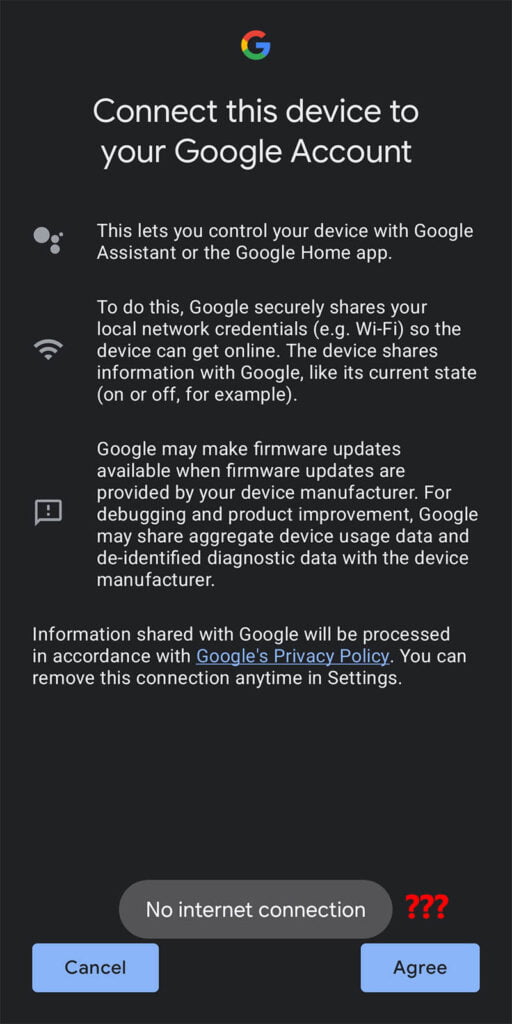
With Home Assistant, you can control Zigbee and Z-Wave devices when your internet or even LAN networks are down. Further, you can directly bind Zigbee devices and even bypass Home Assistant altogether – something unachievable with Matter devices at this point.
5. Early Adoption Concerns
Most Home Assistant users are early adopters and vocal influencers by nature when it comes to buying advice and product feedback. This is also true for Matter devices appearing on the market, but it also means we deal with the initial bugs or stability issues. These can range from minor inconveniences to significant disruptions, especially in a smart home environment where reliability is crucial.
A while back, I reviewed one of the first light bulbs with Matter support, the Zemismart ZML2. I noted in the article that this is a good device to get your feet wet and experience Matter, considering it’s pretty cheap. However, would I mass deploy this bulb in my smart home? No, I would not.
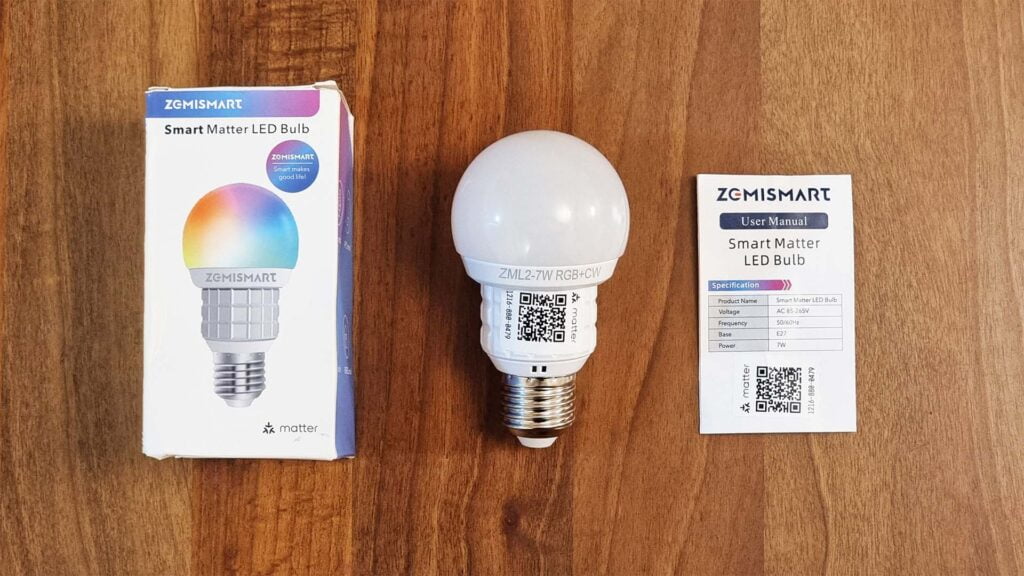
Besides the extremely easy onboarding process, there isn’t much benefit of using this over a Phillips Hue Zigbee Bulb or similar. In fact, deploying 5 or more of these bulbs and I would like experience connectivity issues, network instability and delays – all because the bulb is using Wi-Fi, hidden under the Matter application layer.
As another example, energy metering features have been missing from the Matter specification for quite some time now, which cripples the functionality of many devices such as smart plugs, clamp meters or switches with energy monitoring.
6. The Cost-Benefit Analysis
Being a Matter alliance member is not cheap, and companies incur significant costs depending on their size and product portfolio. The Connectivity Standards Alliance (CSA), the organization who made Matter, has put forth a membership pricelist, cascading it in 4 different levels: Associate, Adopter, Participant, Promoter.
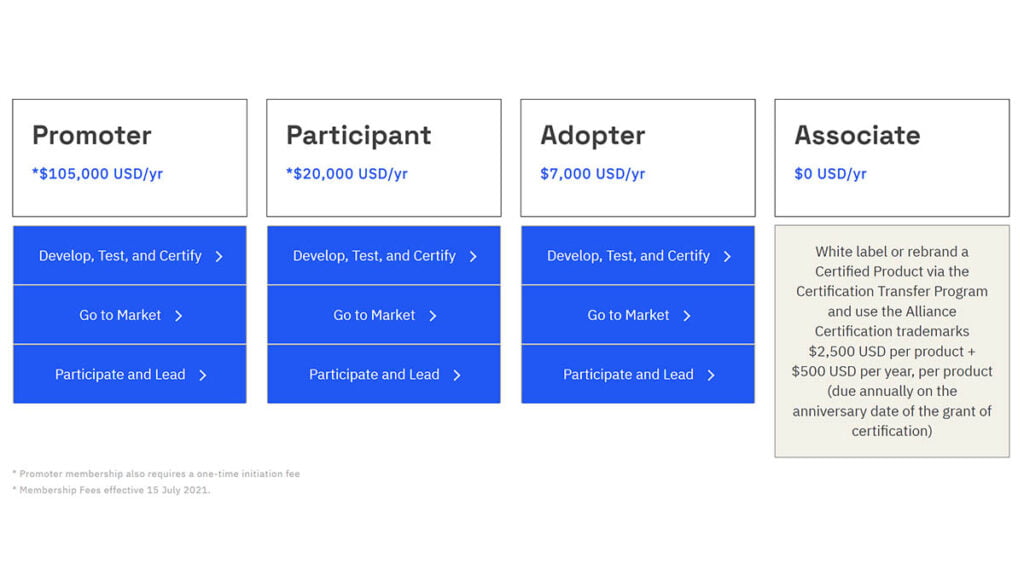
Without digging to deep, it would cost a company a one time fee of $2000-3000 per product (depending on the membership tier), potentially even more, to certify a Matter device. Add that to the membership price and any additional costs and the price of the product goes only up. Ultimately, the end users ends up paying higher prices for marginal or even non-existing benefits of Matter-certified devices.
However, there’s a hidden premise of lower prices somewhere in this logic because of Matter’s interoperability. In other words, Matter is removing the platform compatibility as a selling point from manufacturers, and in time, we should be paying more for a product only because it offers better quality and features compared to the competition, not because it works with Google Home or Apple HomeKit. I do not believe this is the state of things at the moment, but there is a case to be made for the near future.
From a future proofing perspective, is the investment in new devices and the potential need to replace existing, functioning setups justified by the questionable benefits Matter offers? Absolutely not. In my opinion, there are no legitimate advantages of going all in on Matter in the foreseeable future. You would be incurring significant costs and gaining almost nothing in return.
If you have a perfectly functioning Home Assistant controlled smart home, centered around Zigbee, Z-Wave or ESPHome you already know what you are doing and you should continue to invest in devices using these protocols, at least for the predictable future.
Using Matter with Home Assistant
Even though it is my personal opinion that Home Assistant users do not need to bother with Matter, especially not with Matter-over-Wi-Fi devices, you can still utilize what the protocol offers in your Home Assistant controlled smart home. This is the beauty of HA – it works with everything.
If you want to add Matter devices to Home Assistant, you can run the Matter Server Add-on and onboard devices directly with your phone over Bluetooth. Wi-Fi devices will not require any additional setup, and will just work with the add-on running on your local network.
Thread device on the other hand, will require a Border Router to coordinate and form a mesh network. If you already own a proprietary border router, Home Assistant will automatically detect the device on your network and form a network around it. You can use the Sonoff ZBDongle-E with MultiPAN firmware or the SkyConnect dongle to create your own border router.
Okay, so What is Matter doing right?
With all that in mind, it would be completely unfair to only bash Matter and not accent some advantages it brings to the table. Whether or not these are relevant to you is an individual decision, especially if you are a Home Assistant user, however I feel they are important enough to be underlined.
- Interoperability: The absolute number one advantage of investing in Matter-certified devices is the interoperability emphasis. You will no longer need to worry if X device work with Y smart home system. You can mix and match devices from your preferred brands without worrying about compatibility issues, leading to a more cohesive and user-friendly smart home experience.
- Simplified Setup and Use: Setting up and maintaining smart home devices becomes more straightforward. The protocol supports easy device onboarding (usually over Bluetooth), meaning that adding new devices to your network is quick and hassle-free.
- Future-Proofing: Adopting Matter may be seen as an investment in future-proofing your smart home ecosystem. As more manufacturers adopt Matter, it’s en route of becoming the standard, ensuring longer-term support and compatibility. While this certainly applies to smart home controllers like Google Home or Apple HomeKit, again, I feel like it’s irrelevant to Home Assistant Users.
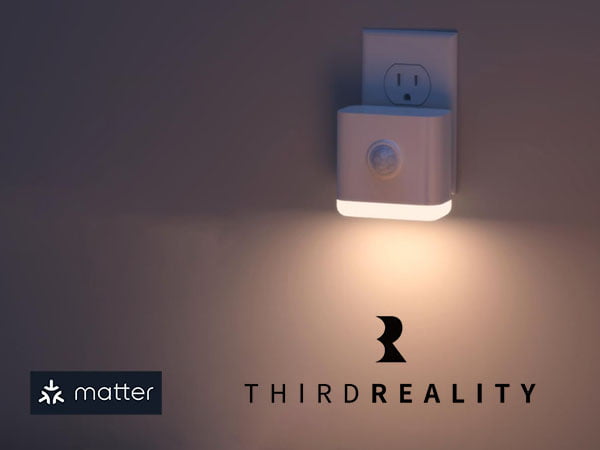
Thirdreality’s Matter Night Light works over Wi-Fi with any Matter controller
What are your though about Matter? What are your thoughts about Thread? I’d love to hear your perspective, whether you use Home Assistant or not. Leave them in the comments bellow.
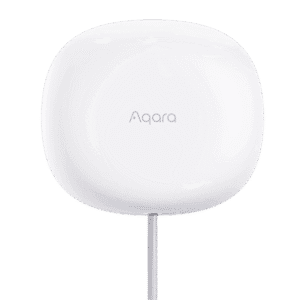









A month ago, a friend who’s newly into smart homes told me he’s exited with Matter’s future. Told him, nowadays I really don’t care anymore. I’ve got all the multiplatform integrations I need since I started with HA.
All the dreams of linking multi platform/brands is reality ever since I went the HA route.
And with either Nabu Casa or Homeway.io I’m connected securely to my home server wherever I am.
HA’s versatility is what other platform can only dream on.
But after reading your write up and do a little thinking, maybe it’s to futureproof HA. Afterall, for the newbie in HA, we’re just an intergration bridge away. So to ensure the bridge will be there in the future, going into and supporting Matter is a very good backup in case some smart brands decided to close their API door.
And HA is positioning themselves as the most compatible with Matter products, which ensures that the communication bridge with smart brand owners to keep the communication channel open with HA.
And HA is also betting on the side of the future where Matter does became the main protocol for everything smart, together both’s future is secure in the long run.
So I think the HA team is doing a fantastic job in laying down the foundation to secure the future. We as HA users are having a double win on this riding alongside.
As for the argument of flashing, not all HA users are advanced techies. Personally I’ve only flashed Wemos D1 Mini & ESP32s for ESPHome. Haven’t found the courage nor parts to flash existing smart stuffs yet.
Hope you don’t mind the long winded comment. Love your website!
I can agree with your POV, I think I’m relaying a similar point with my article.
However, Matter has generated so much noise that the average user begins to think it’s the only choice at the moment. It is not.
I believe there is absolutely no incentive for you, as a user, to replace your existing hardware to support or accommodate Matter.
Especially not perfectly functioning hardware that relies on Zigbee/Z-Wave or anything else controlled locally.
When the time comes, sure, Thread will (most likely) become the best choice for an underlying communication protocol.
Until that happens, there is no point in bothering with Matter at all. At least for the foreseeable future.
Cheers.
Not directly relevant, but when you write; “….centered around Zigbee, Z-Wave or ESPHome…”
Isn’t that like saying; “… if your vehicles run on Petrol, Diesel or Volvo…” ?
I mean, ESPHome is not a wireless communication system, right? It is for the most part based on WiFi signals although it could even be wired.
Hi,
Your analogy is flawed and not relatable.
I understand perfectly well ESPHome is not a communication protocol, I was simply including DIY solutions and devices when I mentioned ESPHome (and yes, they can be Wi-Fi, Bluetooth or wired (PoE).
ESPHome is an integral part of Home Assistant, now being the official firmware of some ready-made devices available on the market (Apollo MSR-1, Everything Presence One/Lite etc.).
If I had put simply Wi-Fi, it would include ALL Wi-Fi devices working with Home Assistant by definition, which is NOT what I would define as a “perfectly functioning smart home controlled by Home Assistant”.
I hope I’m relaying my POV clearly.
Cheers.
I’ll pass on Matter. Ultimately it may provide seamless plug-and-play across multiple hubs and home automation software but you’re right Home Assistant is and will always be the gold standard for flexibility, integration, compatibility, and power. “Works with Home Assistant” is now something more and more providers recognize as important.
I’m not a matter expert but I believe you missed resilience from your matter benefits list and I think it’s a big benefit. From what I’ve read you can have multiple border routers with auto failover which removes the single point of failure of a single zigbee controller.
(I’m not saying a don’t agree with your opinions, I think it’s way too early to move, especially until the interop of border routers sorts itself but I do feel for balance you should mention it)